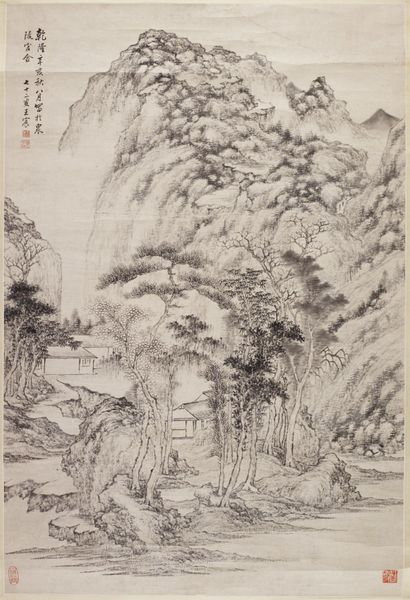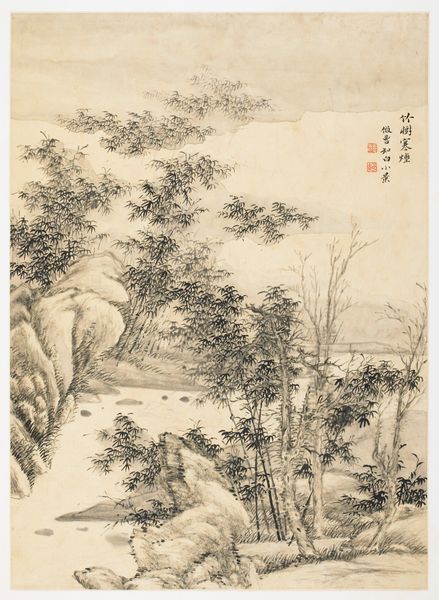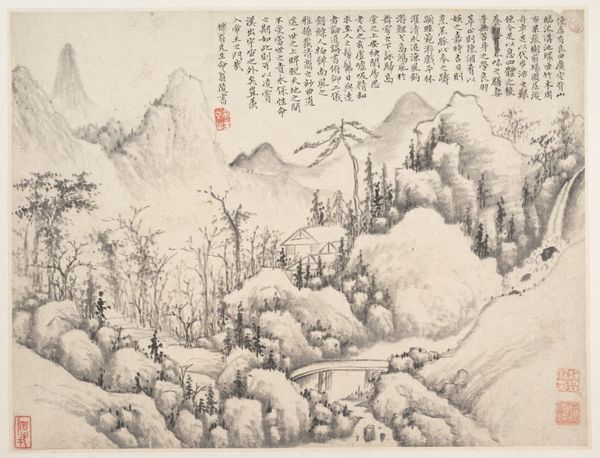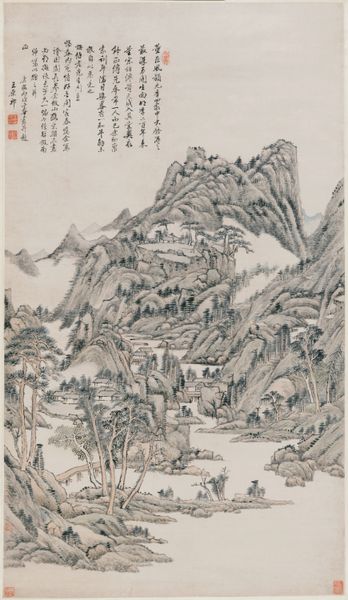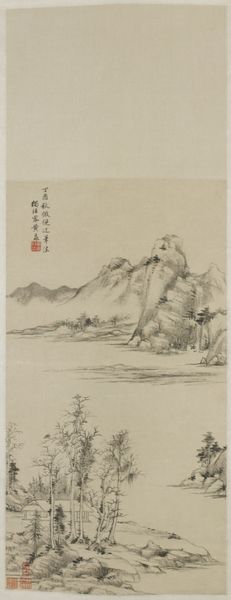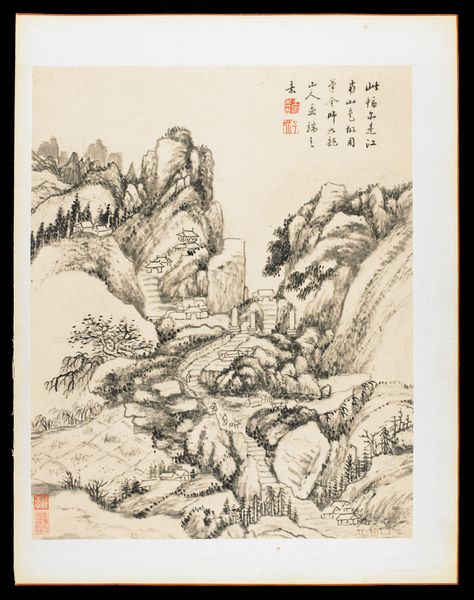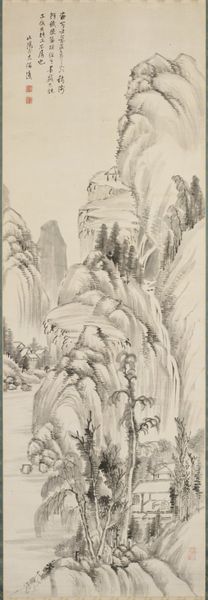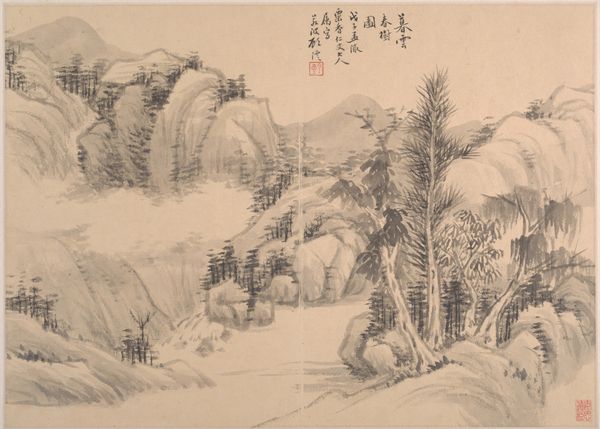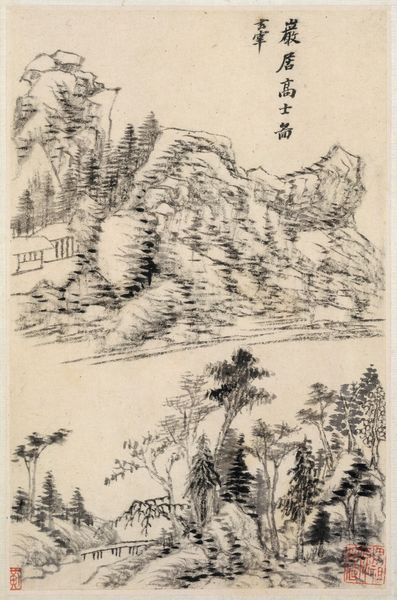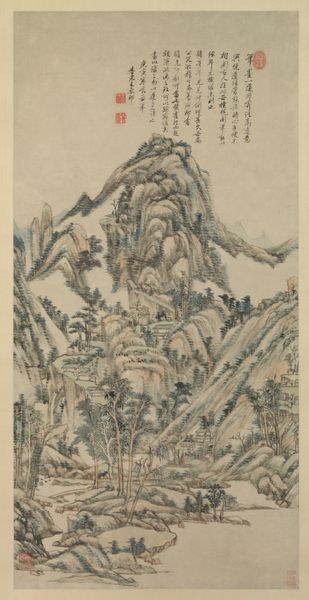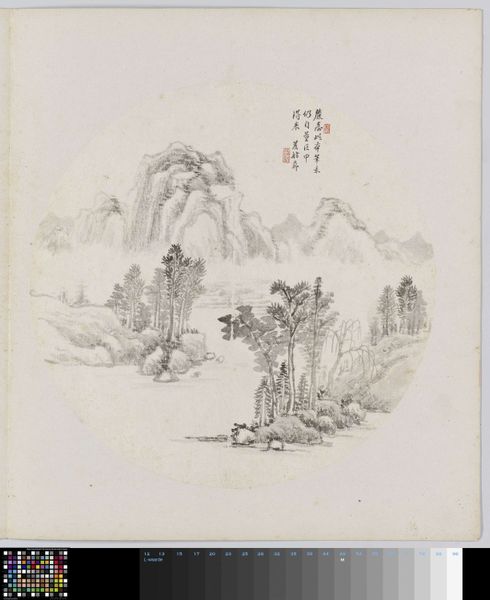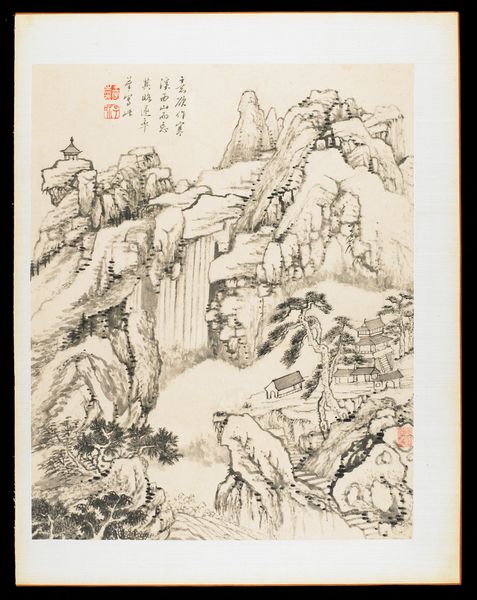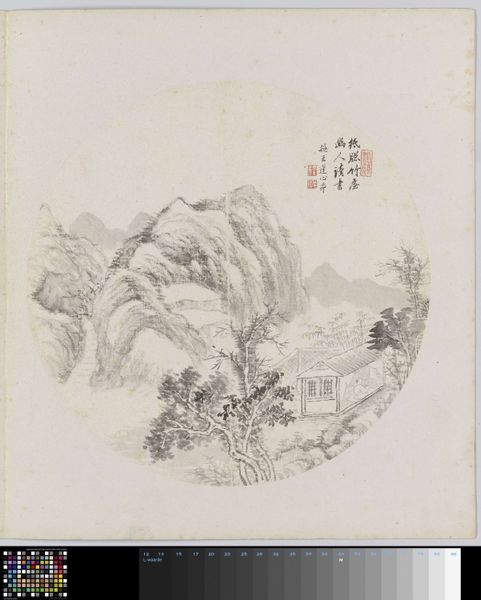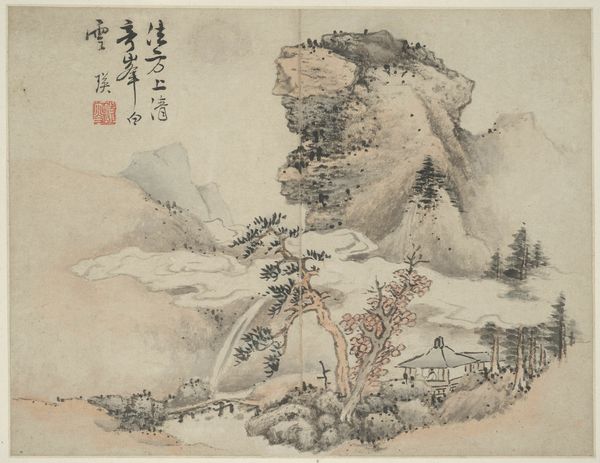
drawing, ink
#
drawing
#
asian-art
#
landscape
#
ink
#
orientalism
#
abstraction
#
calligraphy
Dimensions: 33 3/4 x 18 5/8 in. (85.73 x 47.31 cm) (image)82 3/4 x 23 3/16 in. (210.19 x 58.9 cm) (overall, without roller)
Copyright: Public Domain
Gu Yun created this landscape painting in the manner of Wang Yuanqi using ink on paper, a traditional medium in Chinese art. The controlled strokes of the brush, loaded with varying densities of ink, define the contours of the mountains, trees, and water. Note the repetition of forms and textures, achieved through careful layering and blending. The result is a scene that feels both monumental and intimate. The techniques employed here demanded years of practice and a deep understanding of ink's properties. The evenness of the tones, and the variation in the brushstrokes, speak to countless hours of patient labor. Skills like these, passed down through generations, were highly valued in a society that saw artistic creation as a form of self-cultivation. By focusing on the materials and processes behind this artwork, we gain a deeper appreciation for the cultural values embedded within it, and for the artist’s skill.
Comments
minneapolisinstituteofart almost 2 years ago
⋮
A respected literatus living in Suzhou during late Qing, Gu Yun was sent as an envoy to Japan in 1887. His painting generally followed in the manner of the Qing Orthodox School of ink landscape painting defined by the so-called four Wangs: Wang Shimin (1592-1680), Wang Jian (1598-1677), Wang Yuanqi (1642-1715), and Wang Hui (1632-1717). This new orthodoxy was based loosely on the painting styles of twelfth through fourteenth century masters as formulated in the theories of the great literatus, Dong Qichang (1555-1636). Dong's codification was perceived as the orthodox, politically safe lineage for literati painting during most of the Qing dynasty. This late nineteenth century work by Gu Yun in its light washes, clear composition, and horizontal strokes still reflects the basic values of the Orthodox tradition.
Join the conversation
Join millions of artists and users on Artera today and experience the ultimate creative platform.
